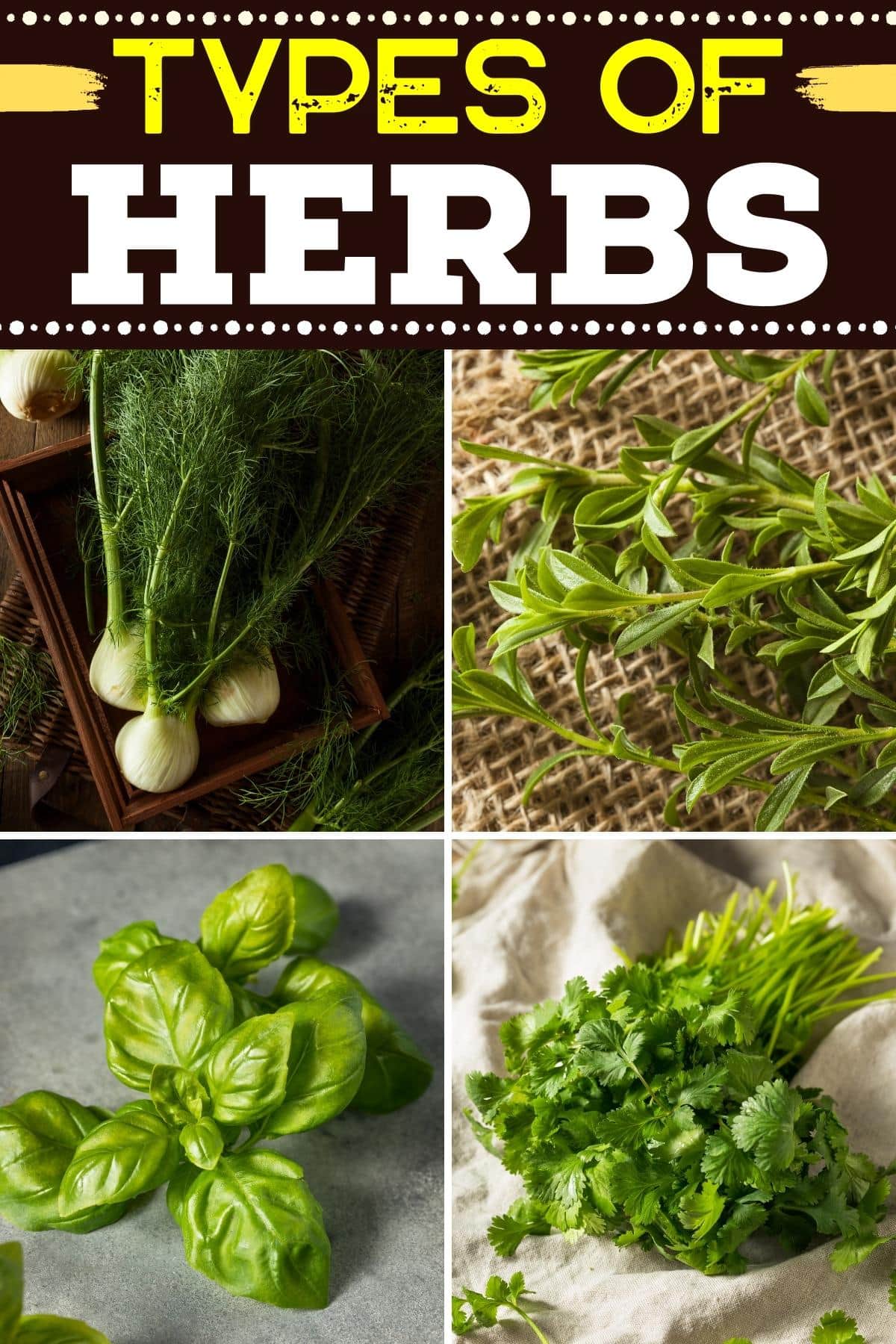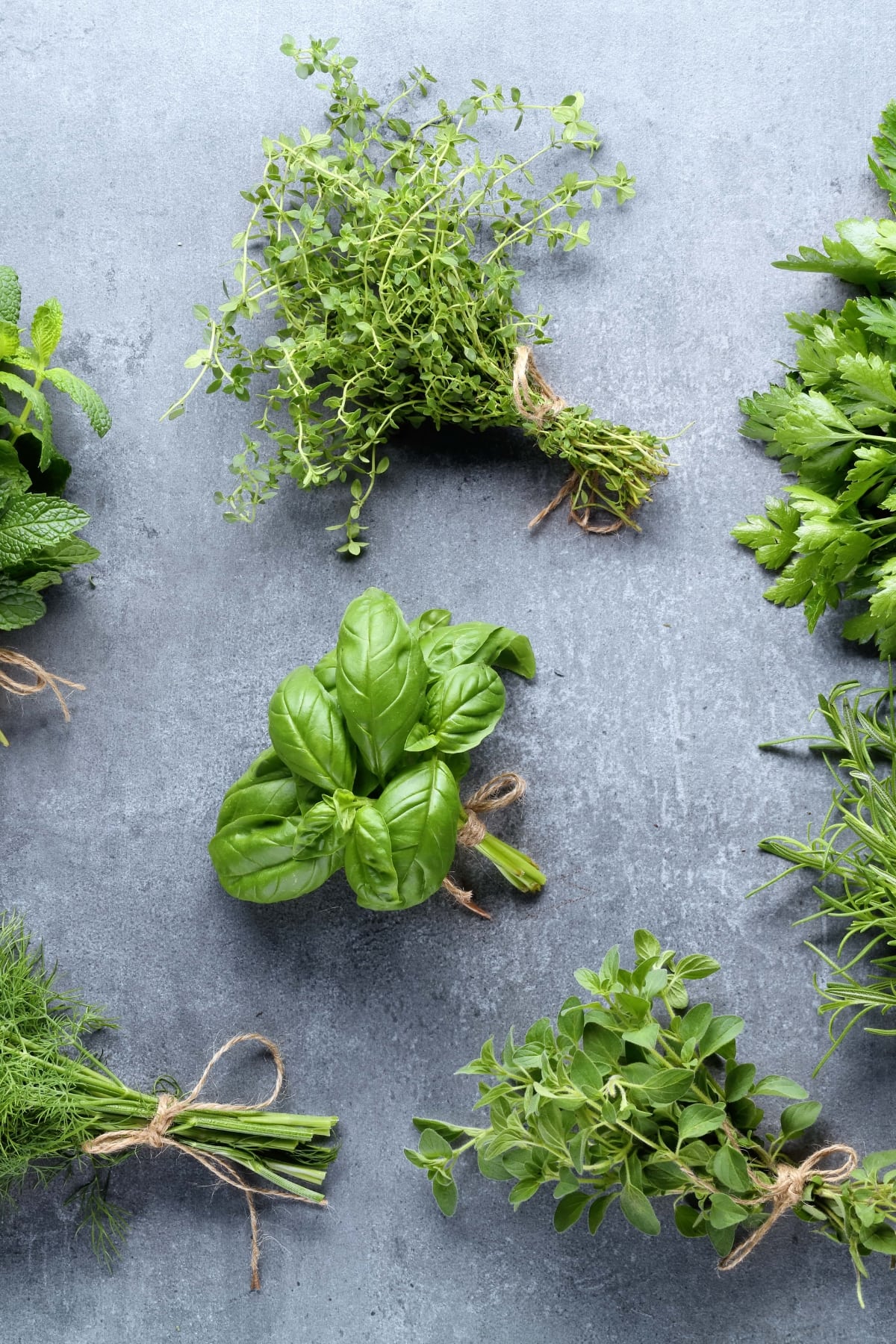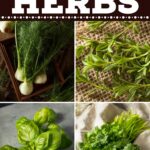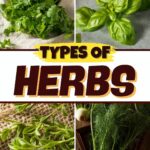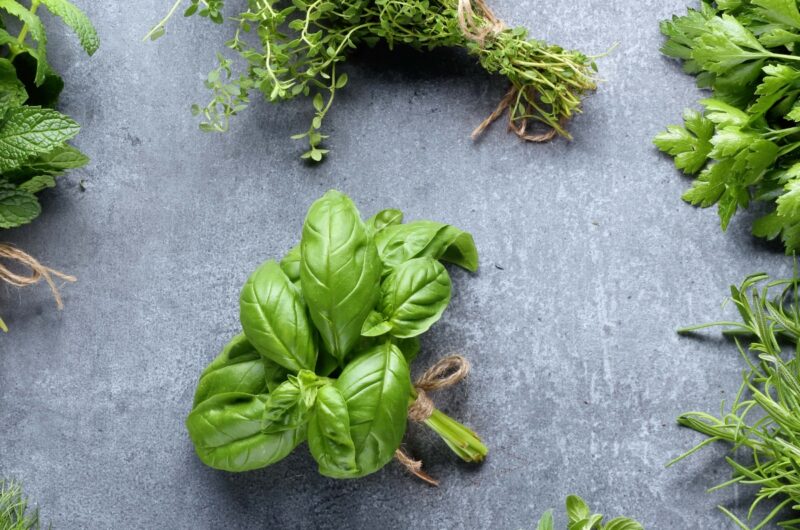Elevate your culinary creations with these 17 types of herbs!
Rosemary, basil, cilantro, thyme- there’s a wide variety of herbs to choose from. Each one will freshen up your meal for an irresistible twist.
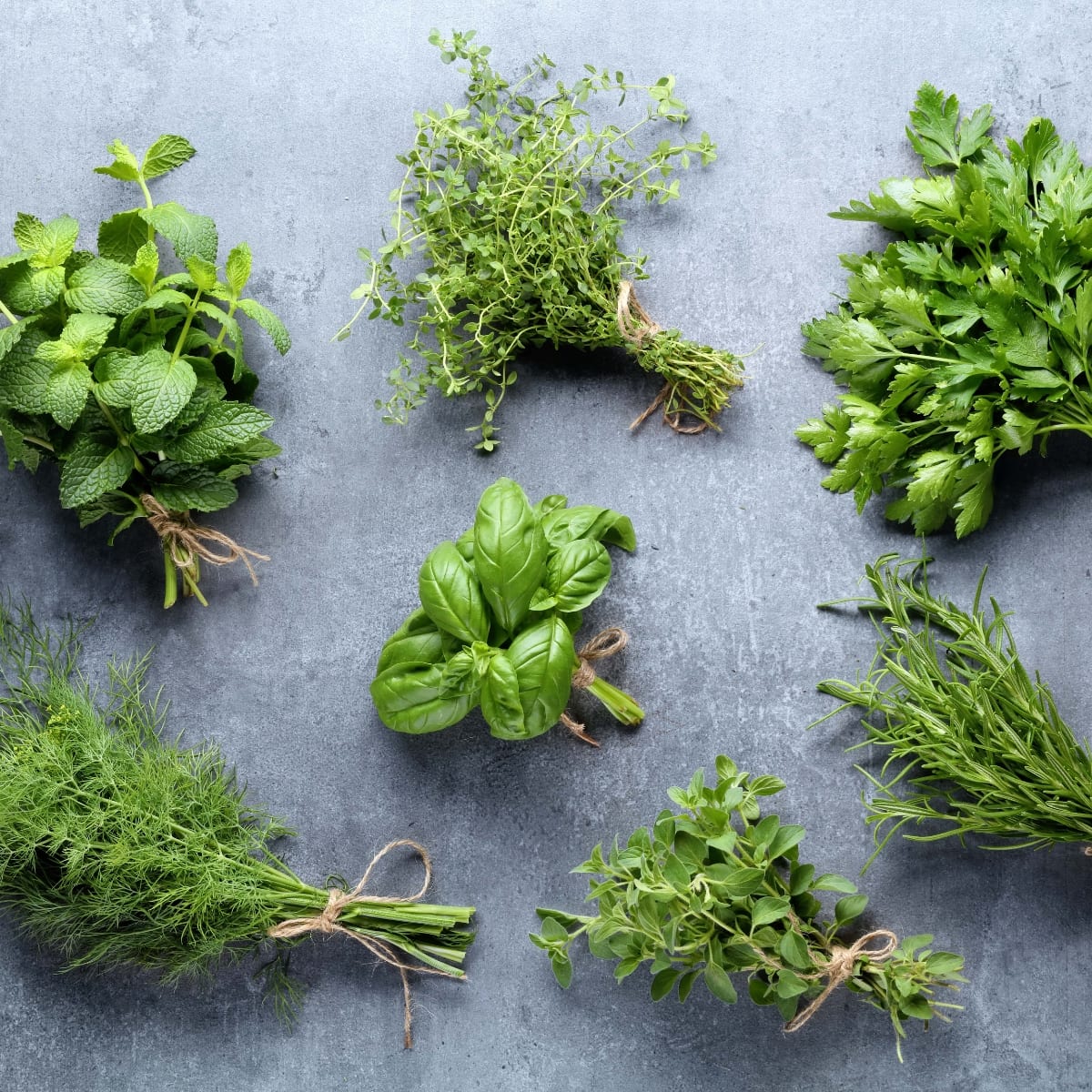
Selecting the right herb for the dish, however, is vital.
For this reason, I put together this handy herb guide. It covers the most popular types along with their flavor profiles and uses.
With these herbaceous delights in your cooking arsenal, your dishes will reach new heights.
Types of Herbs
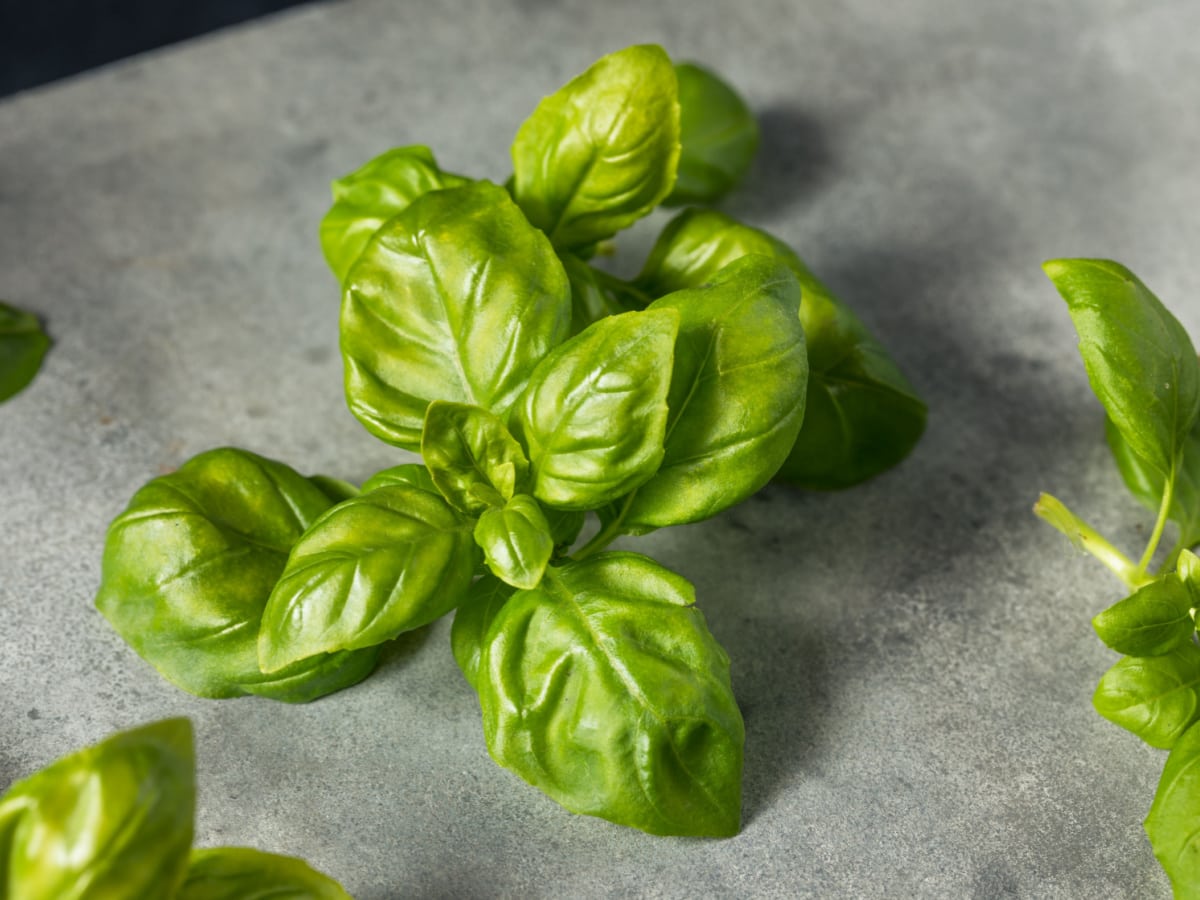
1. Basil
Basil is one of the most widely used herbs. And it receives praise for being versatile and delicious.
Lucky for us, this fragrant herb is easy to find. You may even have a plant in your kitchen right now!
Sweet and Thai basil are the two most common types.
Sweet Basil is subtly sweet, a little peppery, and fresh. This is the type most of us are familiar with. They prominently feature it in Italian cooking.
Thai Basil has a strong, anise-like flavor. You can identify it by the dark, narrow leaves. This basil is common in Asian dishes.
How to use basil:
Fresh or dried, you can find many ways to use basil.
It is a major component in caprese salad and the shining star in fresh pesto. This herb completes a margarita pizza and Thai basil chicken stir-fry.
From appetizers to pasta, there is no shortage of basil recipes.
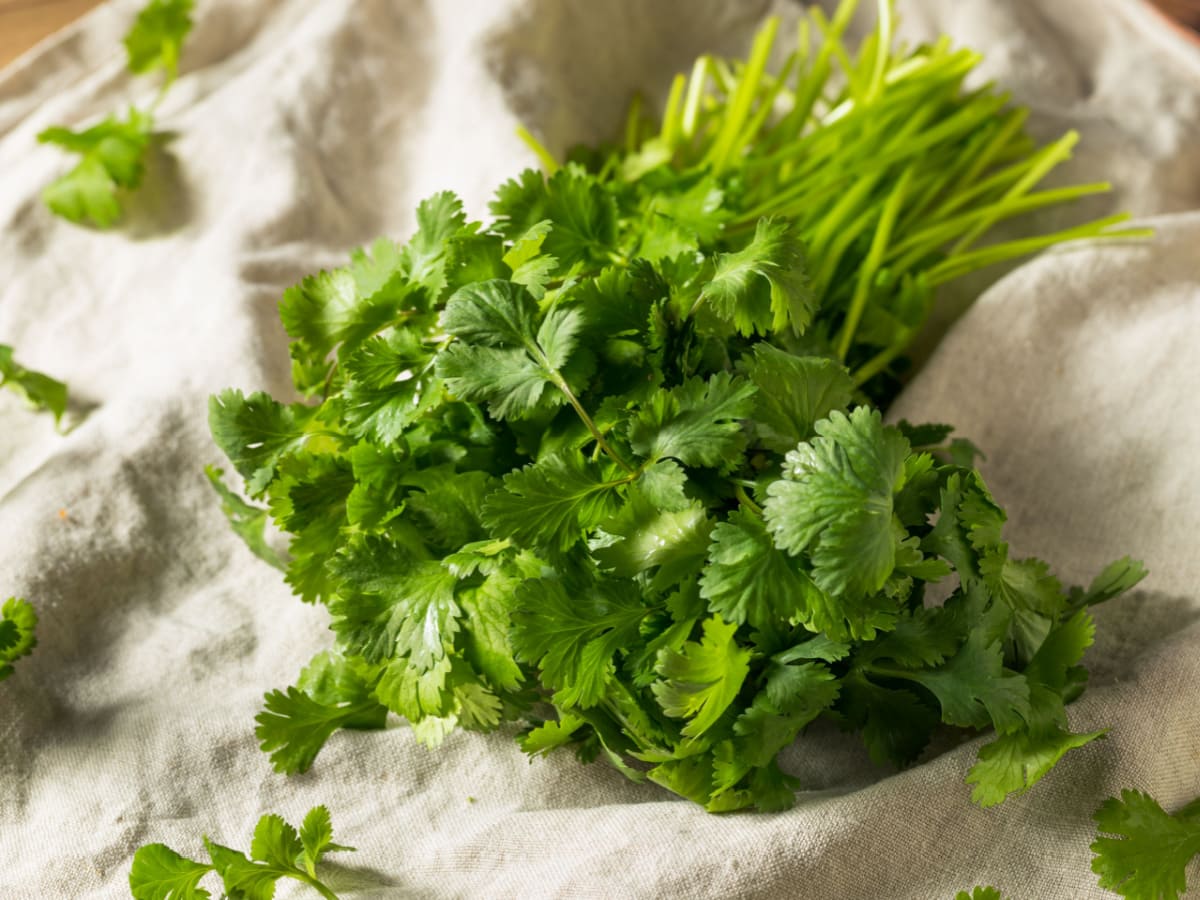
2. Cilantro
As the most popular herb in the world, cilantro needs no introduction. From Mexican to Asian cuisine, it’s used across the globe.
The bright green leaves and thin stems look somewhat like flat-leaf parsley. But there’s no mistaking the signature flavor.
Love it or hate it, this herb has a distinct taste.
Some describe it as soapy. These folks have their genes to blame. Specifically, the gene OR6A2 is responsible for the unpleasant taste.
Those who lack this gene will notice a bright, tangy, citrusy flavor.
How to use cilantro:
There are more ways to use cilantro than one can count!
But as a Mexican staple, this cuisine is a prime place to start. Add it to homemade salsas or use it as a taco topping.
It’s also an excellent garnish for cheesy enchiladas or crunchy tostadas.
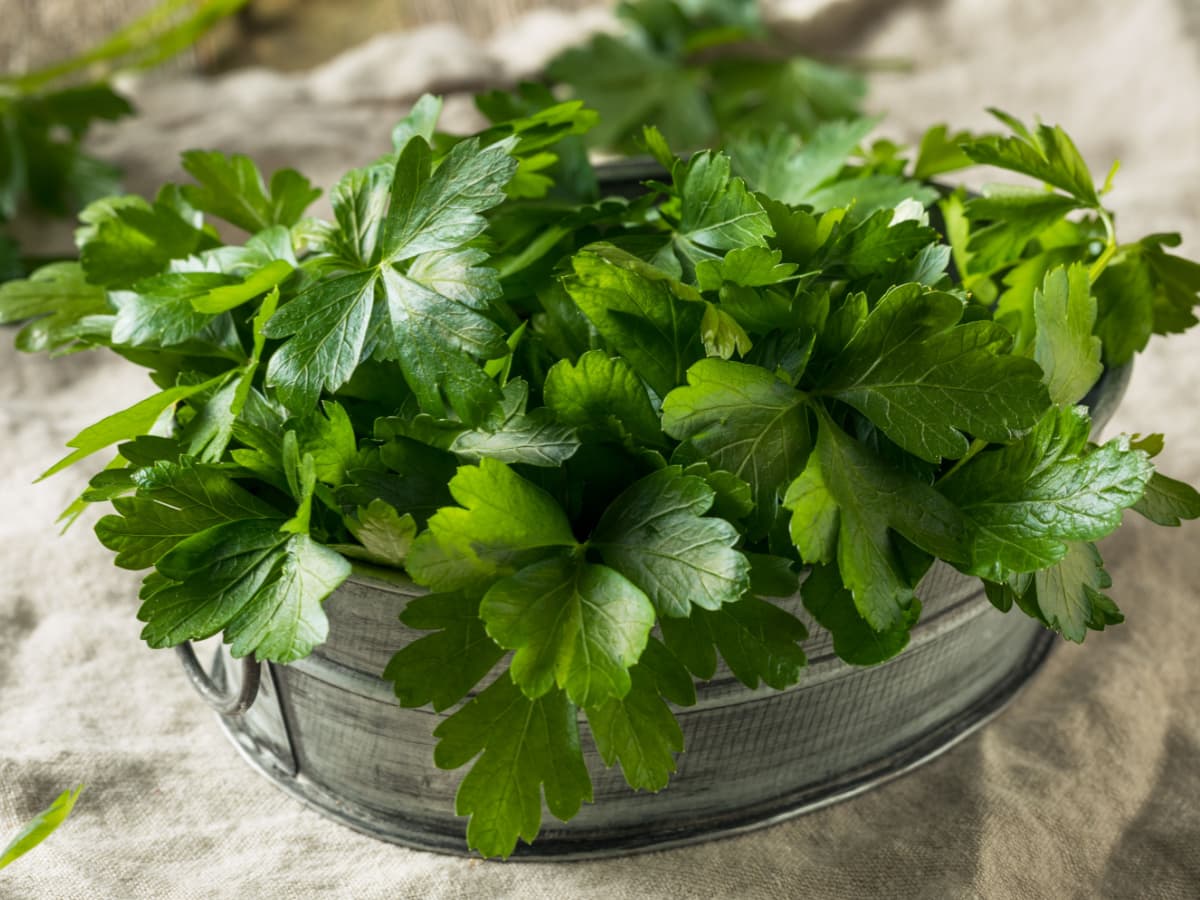
3. Parsley
Another popular herb is parsley. At a glance, it resembles cilantro. But the two have very distinct flavors.
There are two common parsley varieties- curly and flat-leaf.
Curly parsley looks just like it sounds- curly. Italian flat-leaf parsley has broader, flatter leaves with a thick stem.
Like appearance, they differ in taste. Curly parsley is mild and light.
For more of a punch, opt for the other type. Flat-leaf parsley is a little peppery and fresh.
How to use parsley:
Parsley is a must for Italian food. It adds an herbaceous pop to pasta, gremolata, and frittata.
But this herb goes well beyond Italy. Parsley is a vital ingredient in Argentinian chimichurri and Lebanese tabbouleh.
From Mediterranean to Middle Eastern, you’ll find a use for parsley.
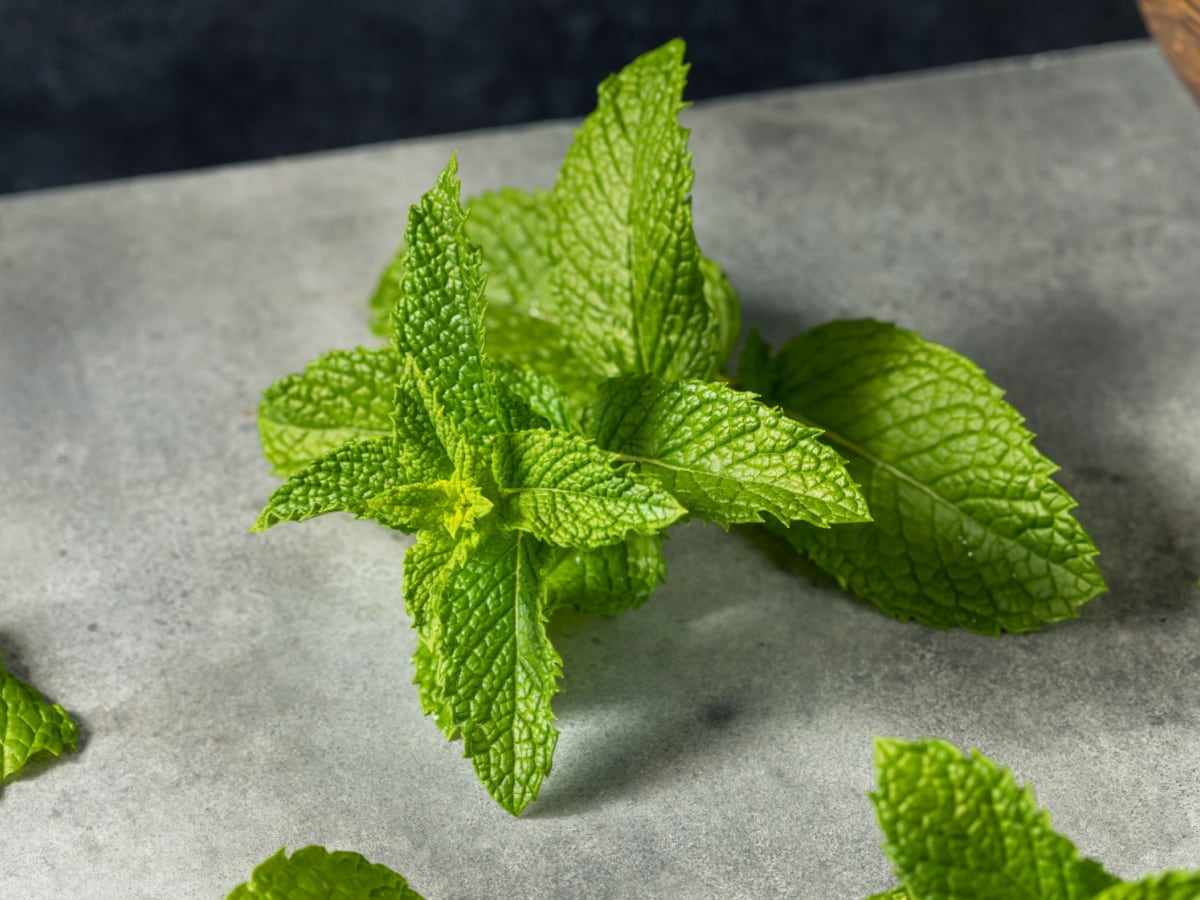
4. Mint
If there were an award for being the freshest herb, it would go to mint. It is the epitome of freshness!
The name, however, doesn’t refer to just one herb. Instead, it’s a general term to identify herbs from the Mentha plant.
Spearmint and peppermint are the most popular. Chocolate, Corsican, and Pennyroyal are some other types.
The nuances will vary by type. Overall, mint is fresh and sweet with a menthol flavor.
How to use mint:
Fresh, dried, or as an extract, mint has many uses. Use it to freshen up a libation like a mint julep. Or wind down with it in a soothing tea.
Mint is also a great addition to savory entrees and sweet treats. Hello, mint chocolate chip ice cream!
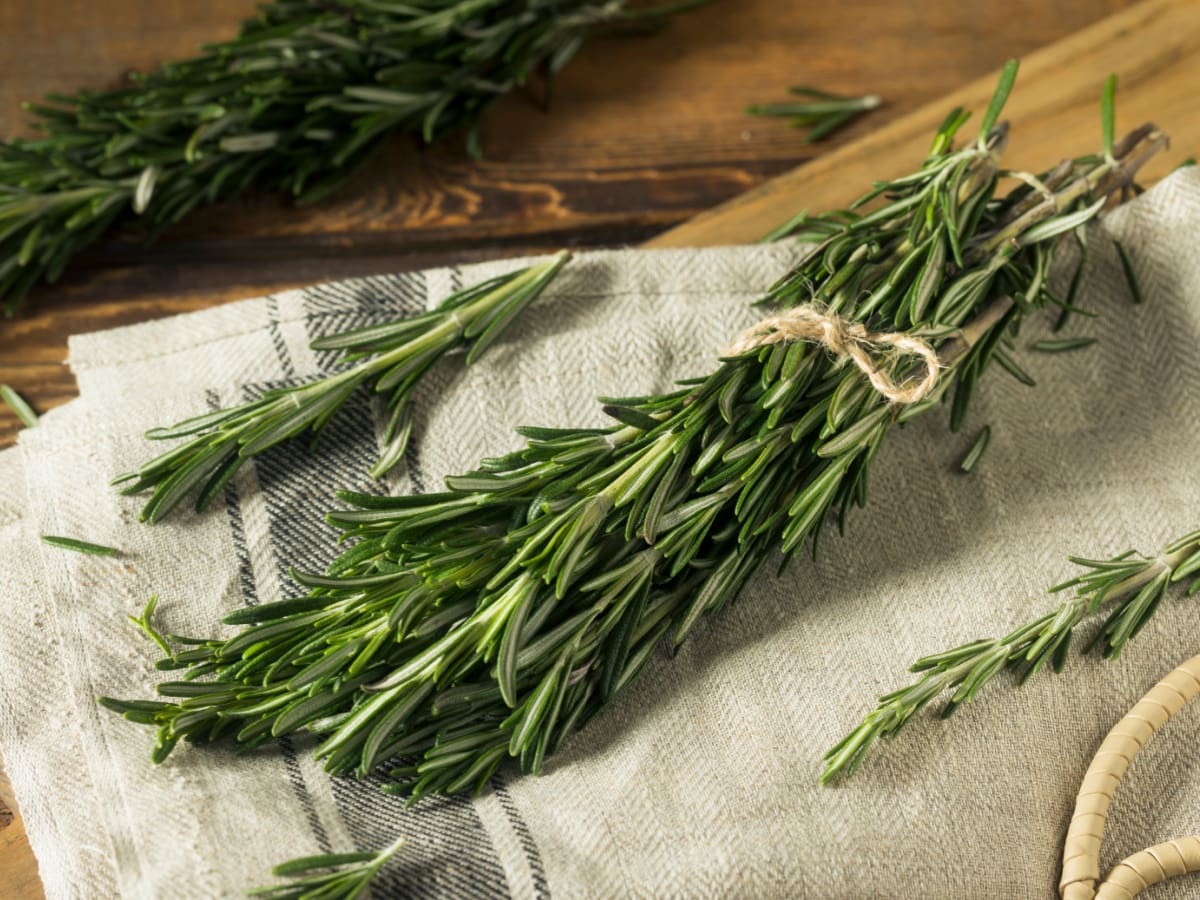
5. Rosemary
Native to the Mediterranean, rosemary is common in Italian and Greek cuisine.
It’s a woody herb with a distinct pine-like aroma and appearance. The sharp, needle-like leaves grow on a thick stem. Both of which you can use for cooking.
Unlike delicate herbs, rosemary is robust and fragrant. It’s lemony, woodsy, and peppery.
How to use rosemary:
Soups, stews, and casseroles all could use a pinch of rosemary. It’s used as a garnish and an aroma enhancer.
A sprinkle turns roasted potatoes into a holiday star. It’s also a prime choice for poultry, pork or lamb chops, and roast beef.
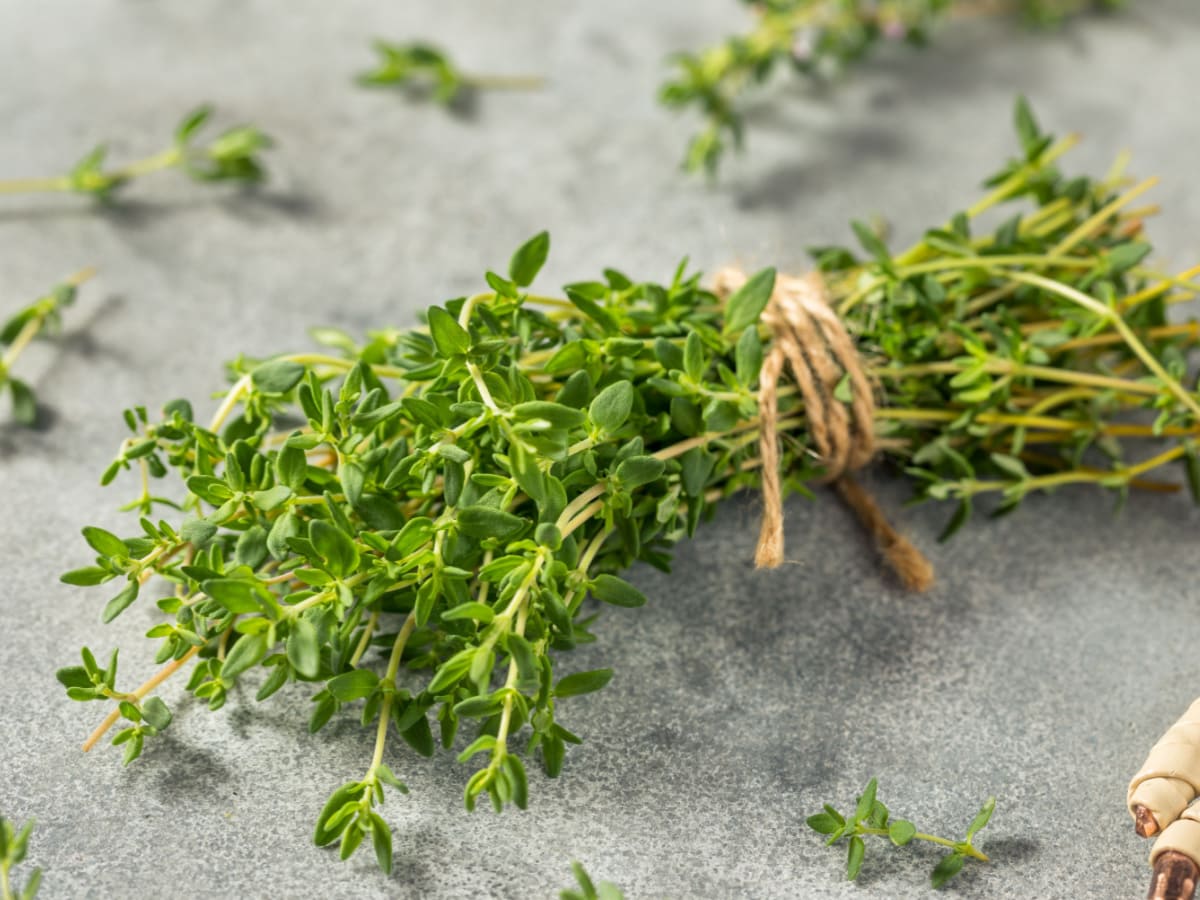
6. Thyme
Thyme is another herb with a woody stem. You can find it in several cuisines, including Italian, French, and Middle Eastern.
It tastes like rosemary but a little milder. Earthy, lemony, woodsy, and minty describe it best.
How to use thyme:
Thyme is a crucial ingredient in Herbes de Provence and Za’atar. It is a common choice for savory dishes and excellent for roasted proteins.
Many recipes require just the leaves. You can use the stem, too, for extra aroma and flavor.
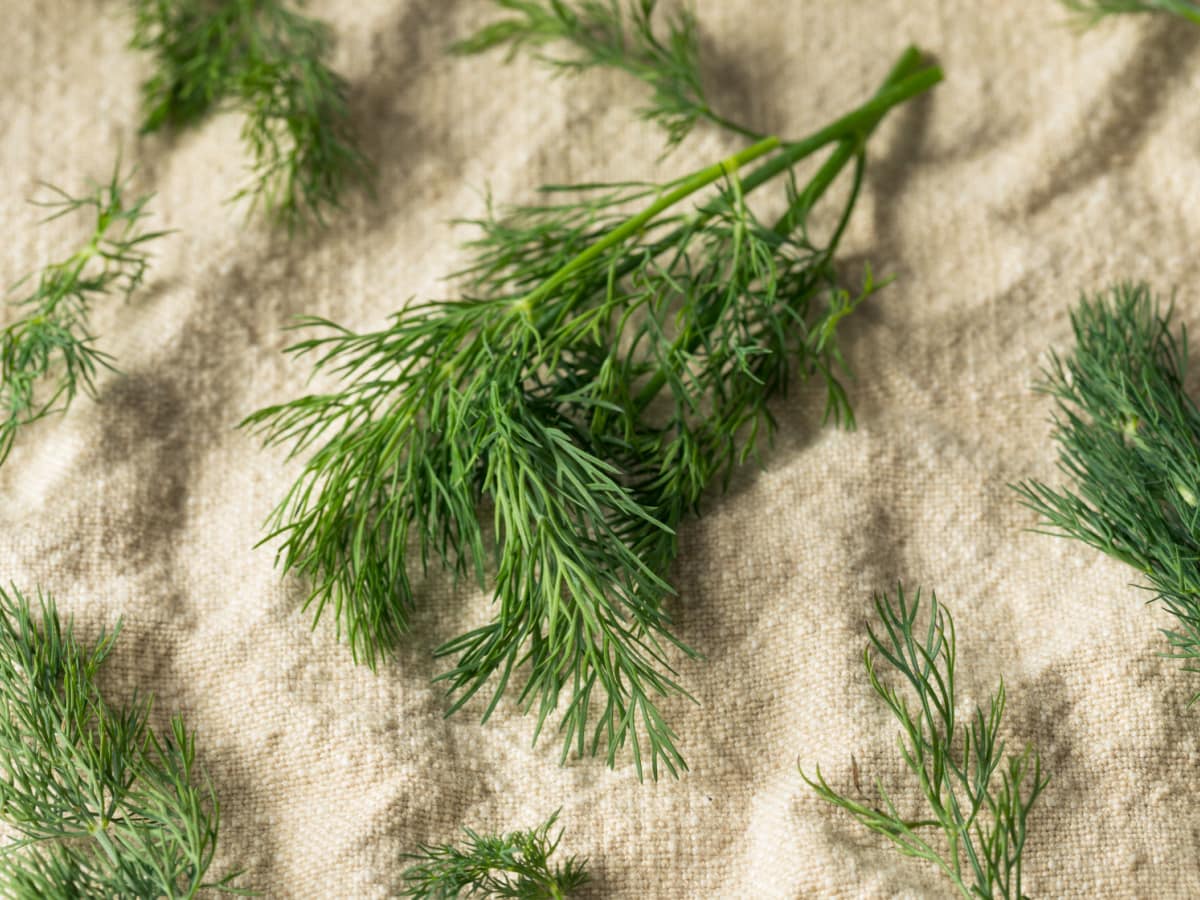
7. Dill
Dill, or dill weed, is a feathery herb that is soft to the touch. But do NOT mistake its delicate appearance. Dill packs a flavorful punch!
It tastes grassy, clean, citrusy, and refreshing with hints of anise. Dried or fresh, you can use it in all kinds of ways.
Just note that the flavor can be powerful. So, a pinch goes a long way.
How to use dill:
Tzatziki, pickles, and potato salad would not be the same without dill. A pinch is a great addition to creamy condiments and dips.
It’s also fantastic on salmon and roasted veggies. However, add it to cooked dishes at the end. Too much heat can ruin the flavor.

8. Oregano
What has flat oval leaves that make marinara sauce complete? The answer is oregano!
Oregano is a potent herb with a savory, earthy, spicy, and subtle bitter flavor.
Like dill, you only need a bit to add a punch to a dish. However, the potency and flavor profile will vary by type.
Dried is the most common form. However, you can use fresh too.
How to use oregano:
This herb has a wide range of culinary uses. You will find it regularly in Mexican and Italian cuisines.
Aside from pizza sauce, oregano works in soups, stews, and marinades. You can use it to flavor lamb and roasted veggies alike.
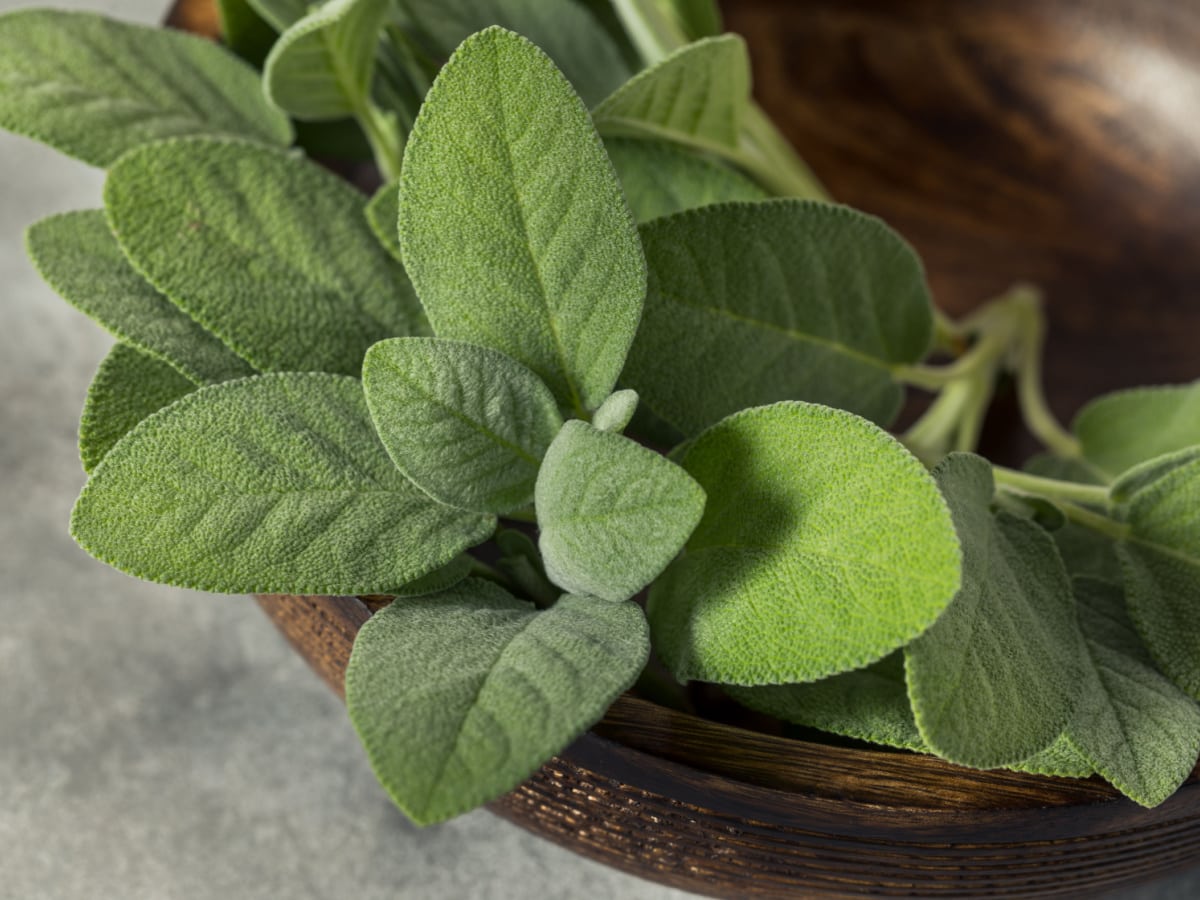
9. Sage
When the cold weather rolls around, sage takes center stage. The fuzzy, velvety, whitish-green leaves are fantastic for hearty and rich dishes.
The smell is quite fragrant, and the flavor is rather distinct. Sage is savory, earthy, and somewhat peppery with a hint of mint.
Unlike other herbs, it’s better cooked than used as a fresh garnish.
How to use sage:
The boldness of sage pairs best with meats and rich dishes.
For instance, sage is at home in brown butter. Especially when you add it to butternut squash ravioli. Yum!
You can also add fried leaves to all kinds of savory sage recipes.

10. Chives
Chives are sometimes mistaken for green onions. But this allium is from another plant.
The slim, hollow stems sport a lovely shade of deep green. The flavor, however, is what makes them worth using.
They have a mild, oniony quality that is very refreshing. Despite their delicate nature, they add a fresh burst to any dish.
How to use chives:
You cannot have a sour cream and onion dip without chives. They do wonders to spruce up creamy dips and condiments.
Other must-try chive uses include omelets, baked potatoes, pork potstickers, and savory baked goods.
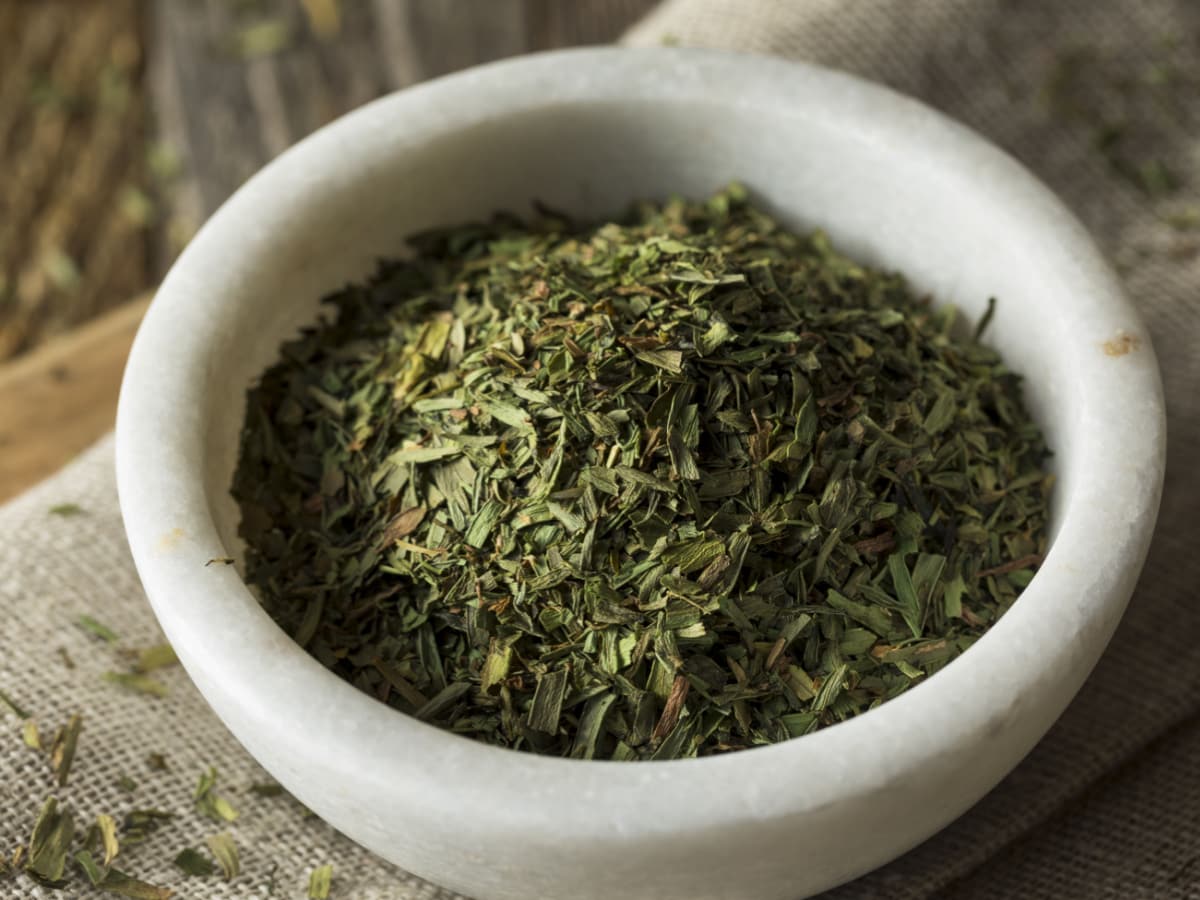
11. Tarragon
Tarragon is not your every day, every-dish sort of herb. But do not underestimate it!
The long, grassy-looking leaves are worth knowing. Dried or fresh, they pack a distinct flavor. Tarragon is sweet with a light licorice taste.
How to use tarragon:
Roasted vegetables, potato salads, white fish, and creamy sauce taste good with tarragon. It’s also a prime ingredient in the French bearnaise sauce.
You can use it as a garnish or cook with it. But don’t overdo it. Otherwise, it can have a bitter taste.
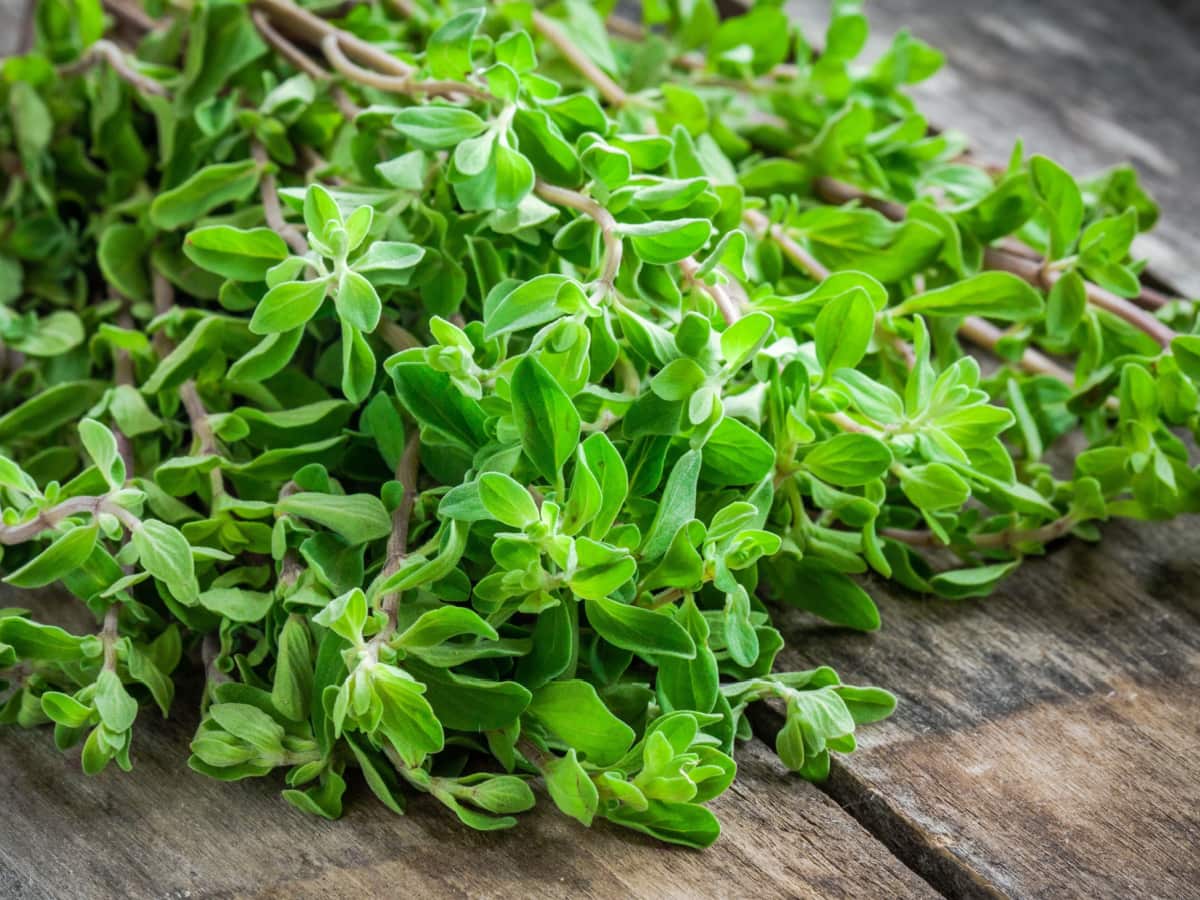
12. Marjoram
You might mistake marjoram for oregano. However, this Mediterranean native couldn’t taste more different.
Marjoram is slightly sweet and mild with a hint of citrus.
You can find it in many Mediterranean dishes. But many other countries like France, Mexico, and Germany use it too.
How to use marjoram:
Try marjoram in soups or stews. It’s also excellent with poultry and white fish.
Like other herbs, cooking marjoram too long will ruin the flavor. So add it towards the end of the dish.

13. Savory
Savory isn’t just a taste. It’s an herb, too!
Like oregano and thyme, savory is an herb in the mint family. The light green leaves are delicate and grow on a thin stalk.
The two types you’ll come across are winter and summer. Winter savory is robust and earthy. Summer savory is more peppery and citrusy.
Native to Eurasia and North Africa, you’ll mainly find savory in European cuisine.
How to use savory:
The names of the two main types indicate their uses.
Winter savory is excellent for hearty dishes like stews with beans or poultry. Summer savory is better for lighter meals like salads.
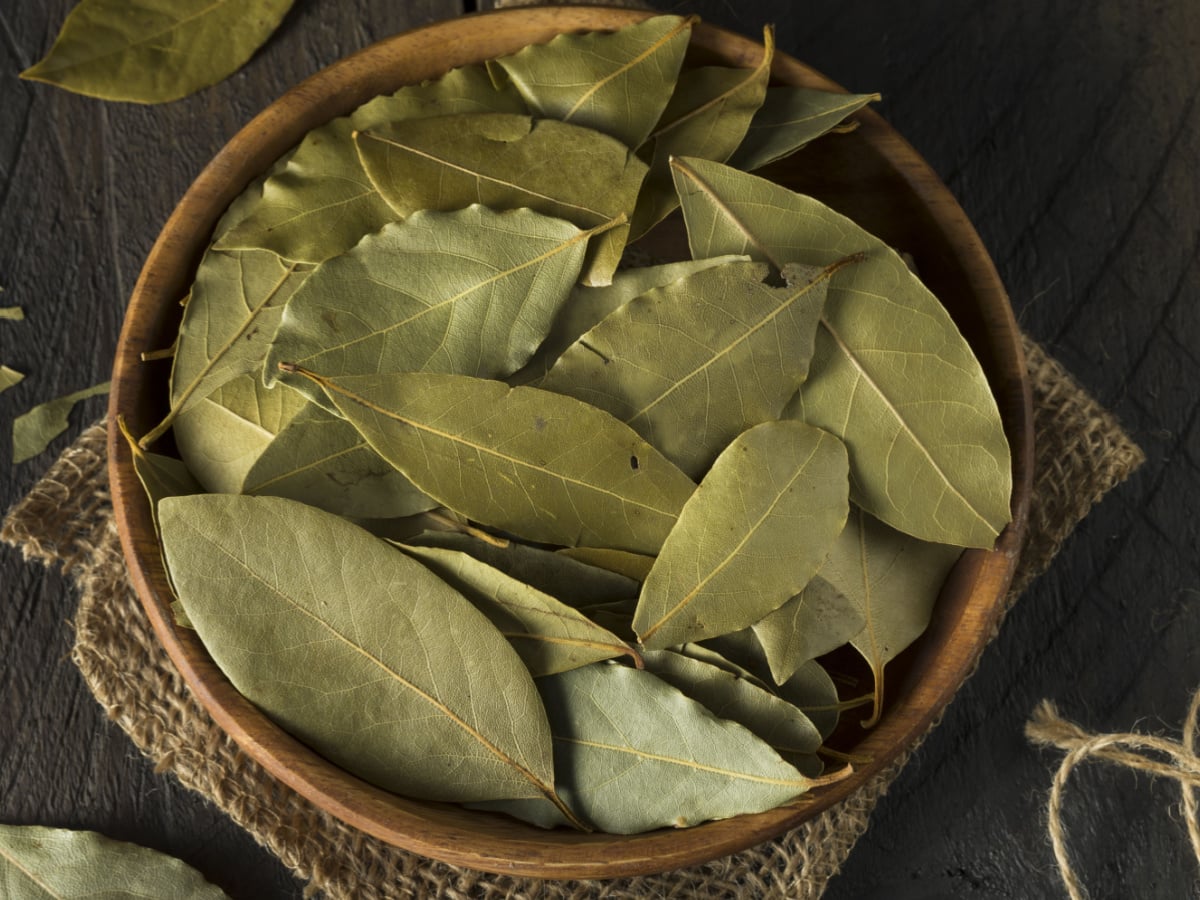
14. Bay Leaf
Soups and stews often call for a bay leaf or two. But do you actually know what bay leaves are?
They’re an herb from the bay laurel (Laurus nobilis) plant. These leaves are bitter, fragrant, peppery, and somewhat minty.
When fresh, they have a glossy luster. But most of us are familiar with the muted green dried form.
How to use bay leaf:
Unlike other herbs, bay leaves are not for consumption. They are strictly meant for flavoring.
They add depth to a dish as they cook, making it more complex. Curries, pot roasts, stews, pasta, and broths all feature bay leaves.

15. Lemongrass
Native to Southeast Asia, lemongrass is a tropical-loving plant in the grass family.
It has a unique flavor, like a cross between a lemon and mint.
Fresh lemongrass is brighter than the dried form. Once dried, it takes on a more woodsy flavor.
How to use lemongrass:
Dried lemongrass is exquisite in tea. Fresh lemongrass is excellent in Thai cuisine. In fact, it’s a primary ingredient in curry paste.
Remove any tough leaves and use the yellow part of the stalk. You can also enjoy lemongrass with seafood and poultry.
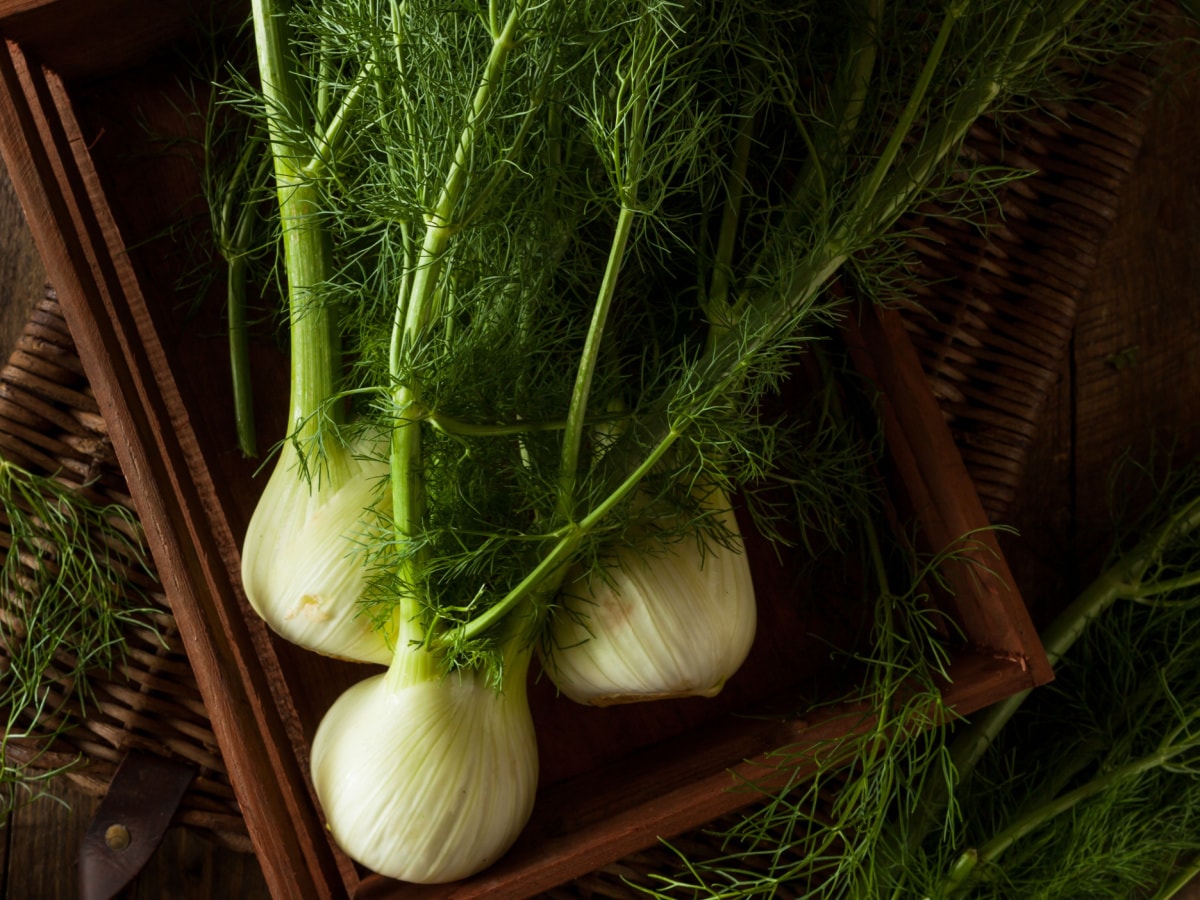
16. Fennel
Fennel is a rather peculiar-looking herb. At the base is a big, white bulb. Shooting upward are stems adorned with feathery leaves.
Part of the carrot family, fennel has a distinct licorice flavor. The dried seeds are even more intense.
How to use fennel:
Raw or cooked, you can enjoy fennel both ways. Use this herb for salads, pasta, soup, pizza, teas, or garnishing meat.
The culinary uses don’t end there. Fennel recipes run the gamut to include sweets and cocktails, too.
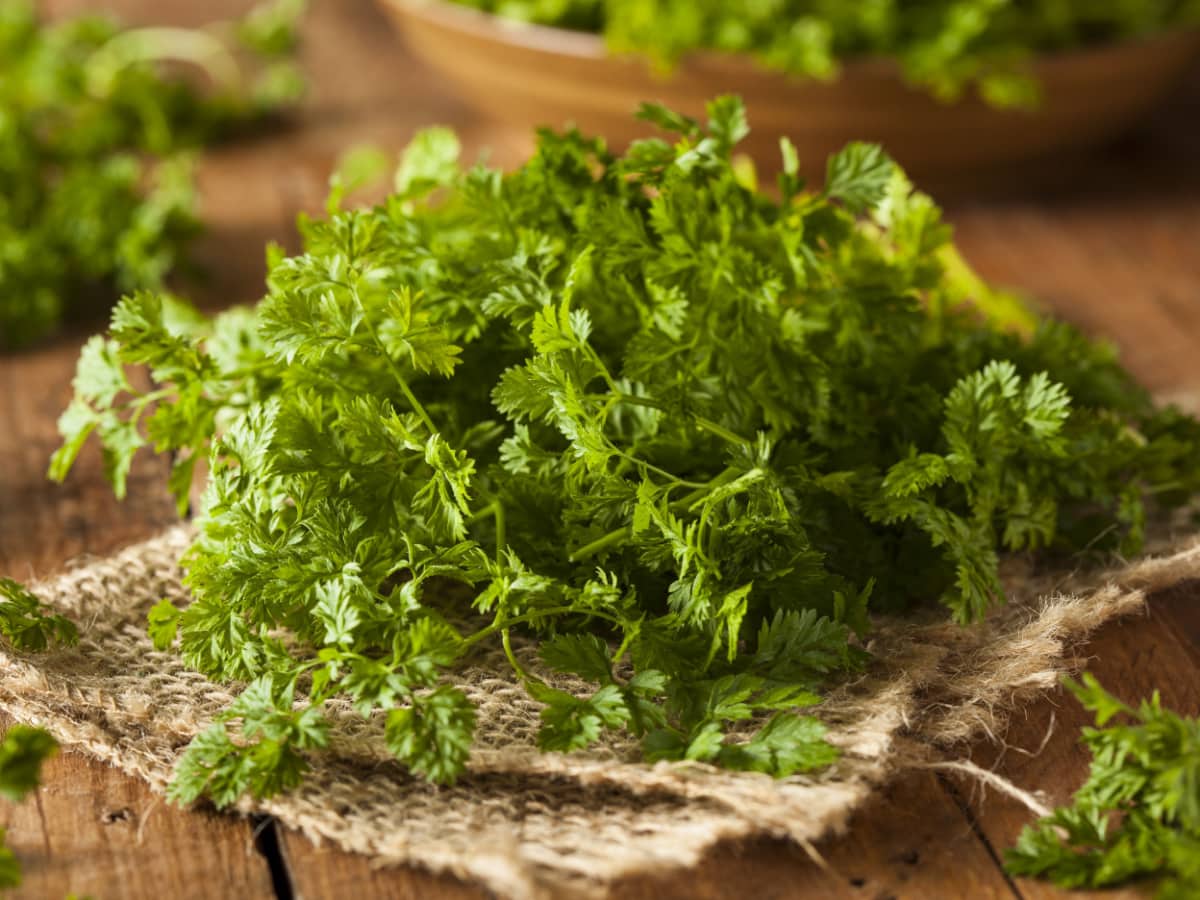
17. Chervil
Not to be confused with chevre, chervil is an herb found in French cuisine. It looks like a mix of cilantro and parsley.
This isn’t too surprising because it is in the parsley family. And it tastes sort of like it, too!
Bright and fresh, chervil tastes like a cross between parsley and tarragon. It has hints of licorice, but it’s very mild.
How to use chervil:
The best dish for chervil won’t mask its delicate nature. Use it in salads, condiments, egg dishes, poultry, and seafood.
